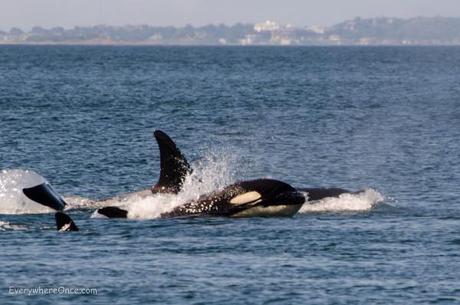
We got lucky.
Driving up the western coast of San Juan Island, fresh off the morning ferry, we saw a cluster of people on a rocky expanse looking out to sea. Figuring the “rubber-necking” likely meant creatures were in sight, we parked our car and hurried over to watch the show. Off in the distance, a pod of orcas was steadily making its way towards us.
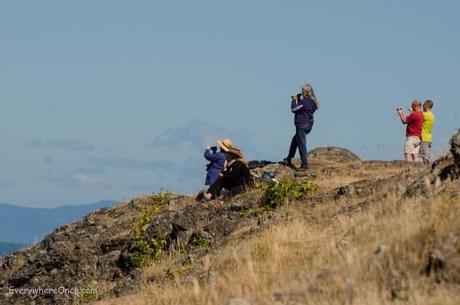
Hey, what are they looking at?
We scrambled down a hillside to the water’s edge, a closer vantage point to the killer whales even than the one had by sightseers in tour boats. Dozens of orcas, pod after pod, swam by, flashing black and white as they sliced through the waves in graceful unison.
Sharing the secluded viewing space with us was a whale researcher, Deborah Giles, who lives on the island. Although it was her day off, she was spending it like we were, witnessing the orcas in action. The whales had just returned to the area the previous day after a month-long absence.
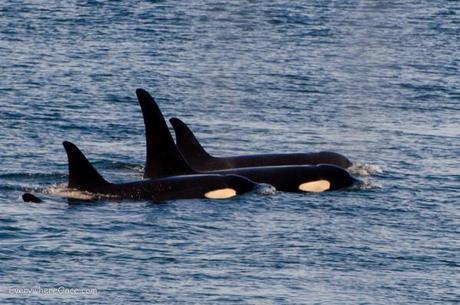
Lots and lots of orcas.
Giles pointed out to us a speedboat off in the distance. On board were some of her colleagues, including Tucker, a black lab sporting a bright yellow life jacket and sitting in the bow, nose raised into the wind. The team, from the Center for Conservation Biology at the University of Washington, is researching the causes of decline among the killer whale population found between Washington State and Alaska. One way they’re doing this is by testing whale scat for toxins and to monitor nutrition and hormone levels.
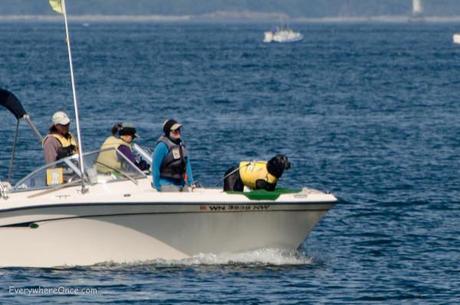
Tucker, the orca-seeking sniffer dog
Not wanting to stress the orcas, researchers need to keep their distance, which is why Tucker’s role is critical. He sniffs out whale scat floating on the water and can do so from as far away as a nautical mile. Tucker is part of a team of Conservation Canines, dogs adopted from shelters and trained for scientific work. Through scat detection, the hounds help monitor an array of threatened species around the world, from tigers and spotted owls to armadillos and anteaters. Tucker’s unusual vocation even earned him a feature in the New York Times.
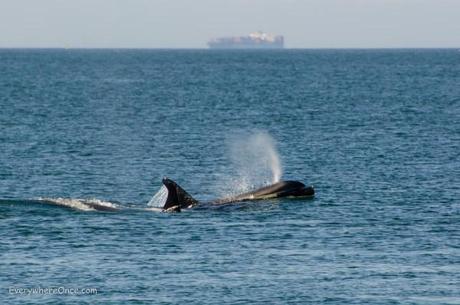
Whether commercial and recreational vessels are harming the orcas is something Giles, Tucker, and team are aiming to prove.
Along with the fascinating tutorial, Giles gave us another important piece of information. She pointed us to the out-of-the-way Tia’s Tacos for dinner that night.
48.551367 -123.078106
